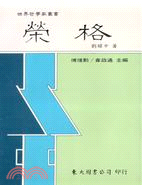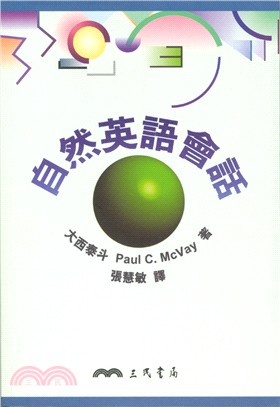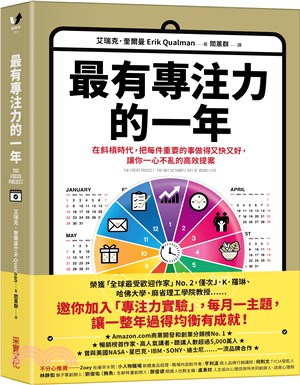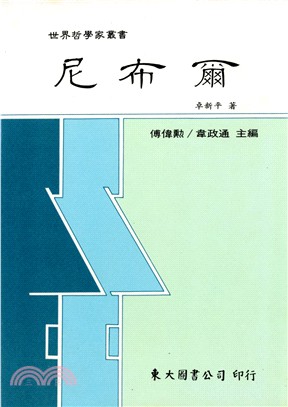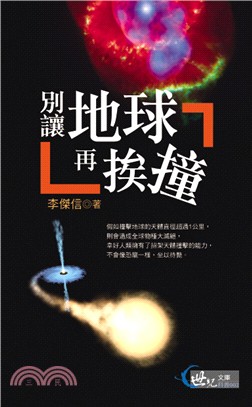相關商品
商品簡介
作者簡介
名人/編輯推薦
目次
商品簡介
This introduction to the field of urban design offers a comprehensive survey of the processes necessary to implement urban design work, explaining the vocabulary, the rules, the tools, the structures, and the resources in clear and accessible style. Providing a comprehensive framework for understanding urban design principles and strategies, the author argues that urban design is both a process and a collaboration in which the different forces involved are knit together. Moving from the regional scale down to the scale of places, the book examines the goals and strategies of the urban designer from the viewpoints of the private sector, public sector, and community. The text is illustrated throughout with photographs and drawings that make theory and practice relevant and alive.
作者簡介
MICHAEL DOBBINS, FAIA, AICP, an architect, city planner, and former Atlanta Commissioner of Planning and Development, is a Professor of Practice in the Architecture and City and Regional Planning programs in the College of Architecture at Georgia Tech. Mr. Dobbins also serves as urban design and development advisor to various organizations and agencies.
名人/編輯推薦
"This book is a distillation of what Dobbins has learned in the course of his career, aims to help readers - students, teachers, practitioners and everyday citizens - seize urban design's full potential…the content which ranges from historical observations to current advice, public-spirited philosophizing, and nitty-gritty discussions of the physical, economic, social, and organizational aspects of planning - should prove useful to serious students of public-sector urban design." (New Urban News, Oct/Nov 2009)
目次
Preface.
Acknowledgements.
Illustration Credits.
PART ONE: BACKGROUND.
Overview - how people have occupied space and who decides.
1. People and Place - how people have shaped their worlds.
Introduction.
Antecedents.
The ‘60s.
The "movement" and the civic environment.
Organizational responses to the rise of citizen participation.
Growing pains - the challenges of citizen participation.
Where we may be heading.
Summary.
2. Urban Design Traditions ? spatial models in the built world.
Introduction.
The organic tradition - naturalistic, indigenous, vernacular, incremental, informal, romantic, picturesque.
The formalist tradition - planned, classical, the grid, monumental, beaux arts, the grand manner, city beautiful, new urbanism.
The modernist tradition - functionalist, rational, technological, utilitarian, clean, efficient.
Interactions and overlaps of the three traditions.
Getting to where we are today.
Environmental responses - from exploitation to balance.
Design responses - from old urbanism to new urbanism.
Citizen participation and urban design - from receiver to transmitter.
The place design disciplines - from divergence to convergence.
Summary.
PART TWO: CONTENT.
Overview - the elements of urban design.
3. The Physical Environment - the places people occupy.
The Natural World.
Introduction.
The elements.
topography.
geology.
soils.
location.
climate.
water.
air.
ecosystems.
Summary.
The Built World - what people have done with it.
Introduction.
The elements.
buildings.
lots.
blocks.
streets.
Synthesis - building, lot, block and street put together.
Parking and utilities.
The larger territories.
neighborhoods.
districts.
towns and cities.
regions.
Summary.
4. Human Activity - what people have to do, want to do and where they do it.
Introduction.
Home.
Workplace.
Marketplace.
Institutions.
Leisure.
Travel.
Summary.
5. Connections - the infrastructure that connects people.
Introduction.
Transportation.
Utilities.
Communications.
Summary.
PART THREE: PRINCIPLES.
Overview - principles for urban design theory and practice.
6. Design - design matters.
Introduction.
Good design makes better places.
Design places to reflect the people who are or will be there.
Design places consciously and holistically.
Design is an essential skill.
Beware of "solutionism".
Design in the context of time - and motion.
Summary.
7. Change - change happens.
Introduction.
Change dynamics.
Framework for understanding and managing change.
Trends in change management.
The triad of vision, information and action.
Provide for choice.
Be ready.
Summary.
8. Organization - coordination and partnership.
Introduction.
Leadership.
Principles for guiding community organizations.
Principles for guiding private sector organizations.
Principles for guiding governmental organizations.
Summary.
PART FOUR: PROCESSES.
Overview - what it takes to get it done.
9. Rules - that make places what they are.
Introduction.
Zoning.
Comprehensive plans.
Public improvement plans.
Subdivision.
Public works standards.
Land development rules at the state and federal levels.
Special purpose rules.
Building and life safety rules.
Financing rules.
Summary.
10. Tools - using the right tool makes the job easier.
Introduction.
Process tools and resources.
Rules to tools.
Summary.
11. Techniques - using the tools.
Introduction.
The pieces.
Navigational techniques.
methodological techniques.
attitudinal and behavioral considerations.
Summary.
PART FIVE: STRATEGIES.
12. Strategies - sample applications.
Introduction.
Resources.
Strategic considerations for communities.
Strategic considerations for urban designers.
Growth choices for regions.
Strategic considerations for towns and cities.
District strategies - centers and corridors.
Strategic considerations for neighborhoods.
Summary.
Bibliography.
Index.
Acknowledgements.
Illustration Credits.
PART ONE: BACKGROUND.
Overview - how people have occupied space and who decides.
1. People and Place - how people have shaped their worlds.
Introduction.
Antecedents.
The ‘60s.
The "movement" and the civic environment.
Organizational responses to the rise of citizen participation.
Growing pains - the challenges of citizen participation.
Where we may be heading.
Summary.
2. Urban Design Traditions ? spatial models in the built world.
Introduction.
The organic tradition - naturalistic, indigenous, vernacular, incremental, informal, romantic, picturesque.
The formalist tradition - planned, classical, the grid, monumental, beaux arts, the grand manner, city beautiful, new urbanism.
The modernist tradition - functionalist, rational, technological, utilitarian, clean, efficient.
Interactions and overlaps of the three traditions.
Getting to where we are today.
Environmental responses - from exploitation to balance.
Design responses - from old urbanism to new urbanism.
Citizen participation and urban design - from receiver to transmitter.
The place design disciplines - from divergence to convergence.
Summary.
PART TWO: CONTENT.
Overview - the elements of urban design.
3. The Physical Environment - the places people occupy.
The Natural World.
Introduction.
The elements.
topography.
geology.
soils.
location.
climate.
water.
air.
ecosystems.
Summary.
The Built World - what people have done with it.
Introduction.
The elements.
buildings.
lots.
blocks.
streets.
Synthesis - building, lot, block and street put together.
Parking and utilities.
The larger territories.
neighborhoods.
districts.
towns and cities.
regions.
Summary.
4. Human Activity - what people have to do, want to do and where they do it.
Introduction.
Home.
Workplace.
Marketplace.
Institutions.
Leisure.
Travel.
Summary.
5. Connections - the infrastructure that connects people.
Introduction.
Transportation.
Utilities.
Communications.
Summary.
PART THREE: PRINCIPLES.
Overview - principles for urban design theory and practice.
6. Design - design matters.
Introduction.
Good design makes better places.
Design places to reflect the people who are or will be there.
Design places consciously and holistically.
Design is an essential skill.
Beware of "solutionism".
Design in the context of time - and motion.
Summary.
7. Change - change happens.
Introduction.
Change dynamics.
Framework for understanding and managing change.
Trends in change management.
The triad of vision, information and action.
Provide for choice.
Be ready.
Summary.
8. Organization - coordination and partnership.
Introduction.
Leadership.
Principles for guiding community organizations.
Principles for guiding private sector organizations.
Principles for guiding governmental organizations.
Summary.
PART FOUR: PROCESSES.
Overview - what it takes to get it done.
9. Rules - that make places what they are.
Introduction.
Zoning.
Comprehensive plans.
Public improvement plans.
Subdivision.
Public works standards.
Land development rules at the state and federal levels.
Special purpose rules.
Building and life safety rules.
Financing rules.
Summary.
10. Tools - using the right tool makes the job easier.
Introduction.
Process tools and resources.
Rules to tools.
Summary.
11. Techniques - using the tools.
Introduction.
The pieces.
Navigational techniques.
methodological techniques.
attitudinal and behavioral considerations.
Summary.
PART FIVE: STRATEGIES.
12. Strategies - sample applications.
Introduction.
Resources.
Strategic considerations for communities.
Strategic considerations for urban designers.
Growth choices for regions.
Strategic considerations for towns and cities.
District strategies - centers and corridors.
Strategic considerations for neighborhoods.
Summary.
Bibliography.
Index.
主題書展
更多
主題書展
更多書展本週66折
您曾經瀏覽過的商品
購物須知
外文書商品之書封,為出版社提供之樣本。實際出貨商品,以出版社所提供之現有版本為主。部份書籍,因出版社供應狀況特殊,匯率將依實際狀況做調整。
無庫存之商品,在您完成訂單程序之後,將以空運的方式為你下單調貨。為了縮短等待的時間,建議您將外文書與其他商品分開下單,以獲得最快的取貨速度,平均調貨時間為1~2個月。
為了保護您的權益,「三民網路書店」提供會員七日商品鑑賞期(收到商品為起始日)。
若要辦理退貨,請在商品鑑賞期內寄回,且商品必須是全新狀態與完整包裝(商品、附件、發票、隨貨贈品等)否則恕不接受退貨。














